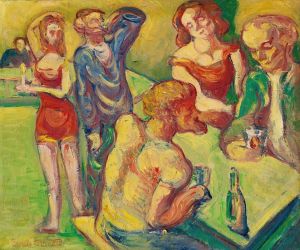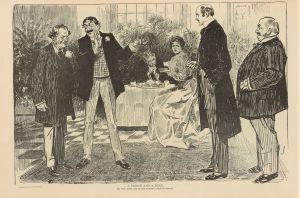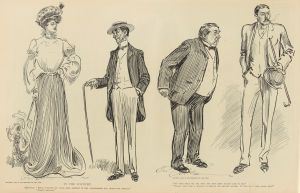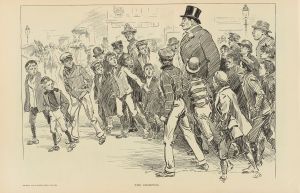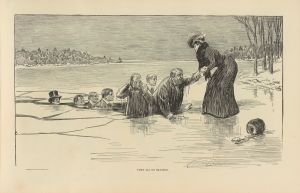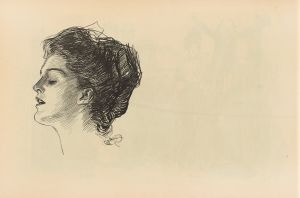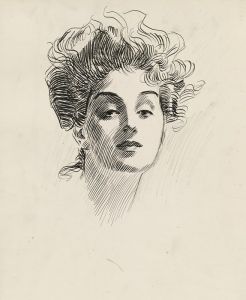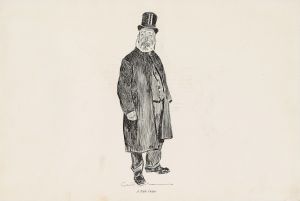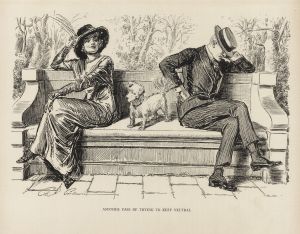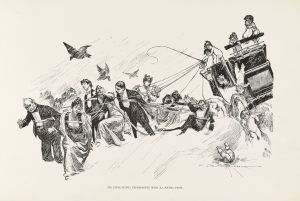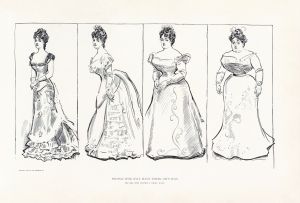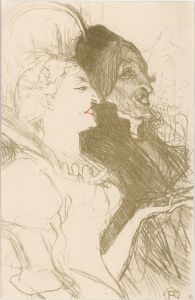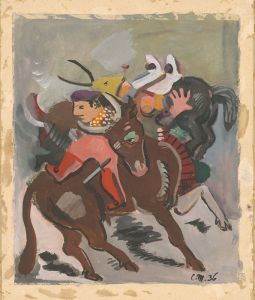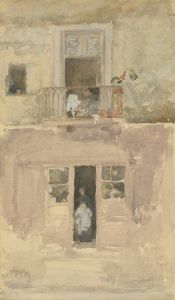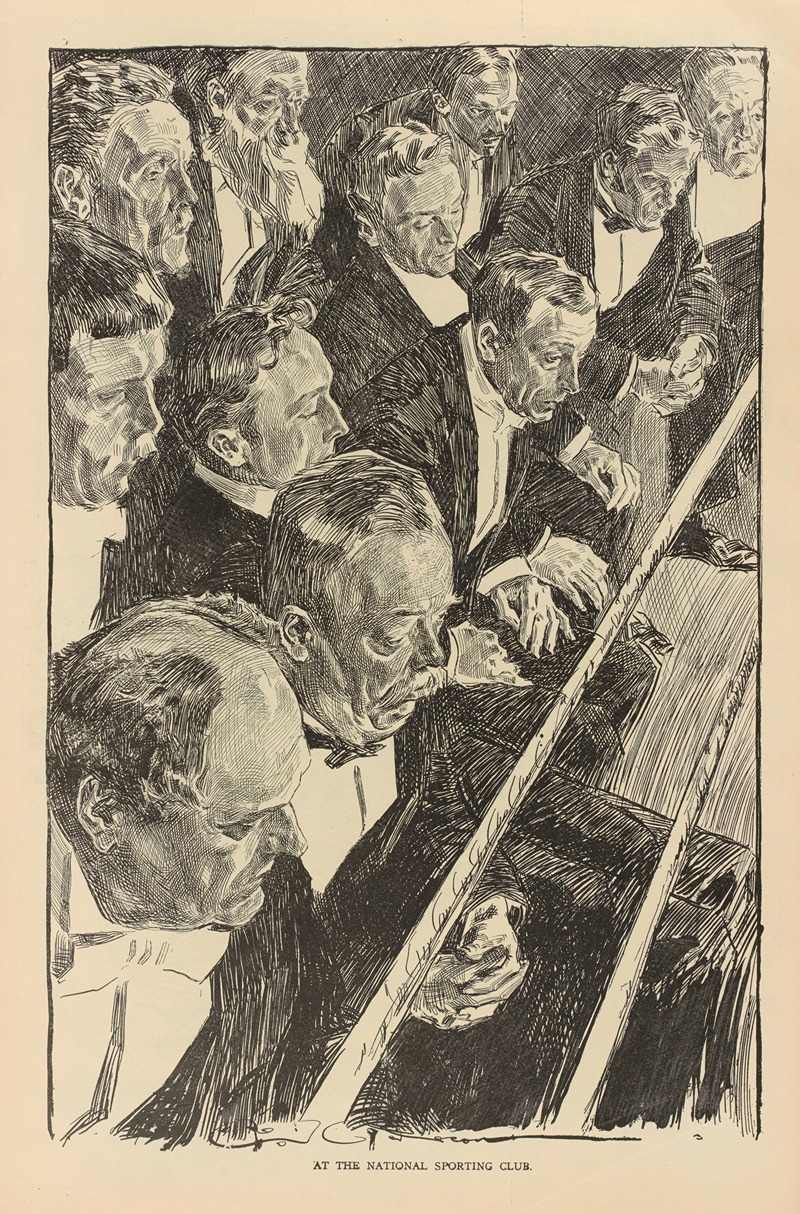
At the national sporting club
A hand-painted replica of Charles Dana Gibson’s masterpiece At the national sporting club, meticulously crafted by professional artists to capture the true essence of the original. Each piece is created with museum-quality canvas and rare mineral pigments, carefully painted by experienced artists with delicate brushstrokes and rich, layered colors to perfectly recreate the texture of the original artwork. Unlike machine-printed reproductions, this hand-painted version brings the painting to life, infused with the artist’s emotions and skill in every stroke. Whether for personal collection or home decoration, it instantly elevates the artistic atmosphere of any space.
Charles Dana Gibson was an influential American illustrator best known for his creation of the "Gibson Girl," an iconic representation of the American woman at the turn of the 20th century. His work captured the spirit and social dynamics of his time, often with a touch of humor and satire. One of his notable works is "At the National Sporting Club," which exemplifies his keen observation of society and his ability to depict it with both elegance and wit.
"At the National Sporting Club" is a black-and-white illustration that reflects Gibson's characteristic style, marked by detailed line work and expressive characters. The scene is set in a social club, a popular setting for many of Gibson's works, where the elite of society would gather for leisure and entertainment. These clubs were often male-dominated spaces, reflecting the gender norms and social structures of the era.
In this particular illustration, Gibson captures a moment of interaction among the club's patrons. The men are depicted in formal attire, typical of the period, with top hats and tails, engaging in conversation and possibly discussing the sporting events of the day. The setting suggests an atmosphere of exclusivity and privilege, common themes in Gibson's work, which often highlighted the social stratification of the time.
Gibson's illustrations were widely published in magazines such as Life, Harper's Weekly, and Scribner's, reaching a broad audience and influencing public perceptions of social norms and ideals. His work, including "At the National Sporting Club," played a significant role in shaping the visual culture of the early 20th century. The characters in his illustrations, particularly the men and women, were often idealized versions of the American upper class, embodying the aspirations and values of the era.
The "Gibson Girl," although not the focus of this particular illustration, is an important context for understanding Gibson's work. She represented a new, modern woman—independent, confident, and socially active—contrasting with the more traditional roles women were expected to play. While "At the National Sporting Club" centers on a male-dominated environment, the presence of the Gibson Girl in other works highlights the evolving dynamics between genders during this period.
Gibson's ability to capture the nuances of social interaction and his commentary on the cultural norms of his time make his work an important part of American art history. "At the National Sporting Club" is a testament to his skill in illustrating the subtleties of human behavior and the societal structures that defined the early 1900s. His legacy continues to be studied and appreciated for its artistic merit and its reflection of a pivotal era in American society.





